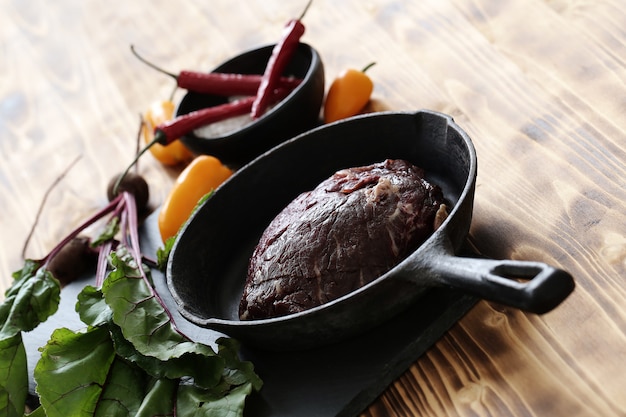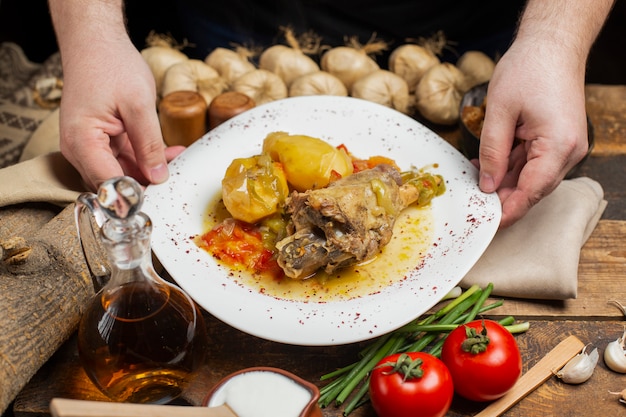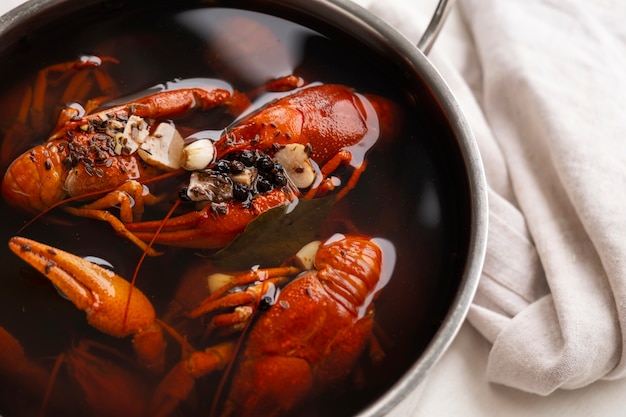Let's talk corned beef – the kind that practically melts in your mouth, leaving a delightful salty, savory flavour that's pure comfort food bliss. I'm here to tell you that creating this culinary masterpiece in your trusty slow cooker is a breeze, and the results are simply divine. We're talking melt-in-your-mouth tenderness, bursting with flavour, and so incredibly easy, you'll wonder why you ever bought pre-cooked corned beef from the store. It's become a family favourite in my household, perfect for a cosy Sunday roast or a hearty weeknight dinner that everyone loves.
So, grab a cuppa, get comfy, and let's embark on a culinary adventure together, uncovering the best tips and tricks for crafting the most impressive slow cooker corned beef. We'll delve into the crucial details of choosing the right cut, preparing it for slow cooker magic, and whipping up delicious sides to complement your masterpiece. Of course, we'll tackle the infamous "brine" situation, giving you the insider knowledge to make a truly delicious and tender corned beef that'll have everyone begging for seconds.
Part 1: Choosing Your Corned Beef - A Foundation for Success

The Cut That Matters: Point vs. Flat
The first step in this delectable journey is selecting the perfect cut of corned beef. Now, you'll find various options at your local supermarket, from small pre-packaged cuts to massive slabs, but for slow cooking, you need to focus on the "point" cut. Trust me, it's the absolute best for this purpose. It's similar to a brisket, but with a glorious layer of fat that renders beautifully during cooking, creating the melt-in-your-mouth texture we all crave. Avoid the "flat" cut, as it tends to be a bit tougher and less forgiving for slow cooking.
The Great Brine Debate: Pre-Brined or Unbrined?
Next, we encounter the "brine" dilemma. This is a matter of personal preference. Some folks swear by pre-brined corned beef, proclaiming it already seasoned to perfection. Others, like myself, prefer starting with unbrined corned beef, allowing us to meticulously control the flavour profile. It's all about what you enjoy, but if you choose unbrined, you'll need to create your own brine. Don't fret, it's not as intimidating as it sounds! We'll tackle the brine process later in detail.
Size Matters: Finding the Sweet Spot
Now, let's talk size. You want a corned beef cut that's substantial enough to feed your family, but not so large that it overflows your slow cooker. A good general guideline is to aim for a 3-4 pound cut. Anything smaller, and you might end up with a drier dish, while anything larger might not cook evenly. Of course, if you're blessed with a seriously massive slow cooker, you can break the rules!
Part 2: Prepping Your Corned Beef - A Little TLC Before the Cooker

The Rinse and Trim: A Clean Slate for Flavor
Before even thinking about the slow cooker, your corned beef deserves some TLC. We're going to start by rinsing it thoroughly under cold water. This washes away any excess salt and removes that slightly slimy coating you might find. Don't be shy, give it a good scrub! Next, trim away any excess fat. You want to retain a good layer for flavor and richness, but no need for a thick slab of fat. Remember, the fat will render down beautifully during cooking, adding to the overall deliciousness.
The Spice Rub: Adding Your Personal Touch
Here's where you can add your personal touch and create a truly unique flavour profile. Now, I'm a big fan of a simple yet effective rub using black peppercorns, coriander seeds, and a touch of garlic powder. You can also experiment with other spices like bay leaves, mustard seeds, or even a pinch of paprika. The beauty of it is, it's entirely up to you! Just make sure you rub the spice blend all over the corned beef, getting it into all the nooks and crannies.
Part 3: Slow Cooker Magic - The Heart of the Process

The First Step: Into the Pot
Now, the moment we've been waiting for! Time to unleash the magic of the slow cooker. Gently place your prepped corned beef into the pot and… wait a minute! We're not quite done yet. We need to add a flavorful liquid that will help the beef cook perfectly and create a delicious broth.
The Magic Broth: Elevating Flavour and Moisture
Here's where the culinary fun begins. You might be thinking, "Broth? How much? What kind?" Well, I prefer using a combination of water and beef broth. It gives a richer, more intense flavour and keeps the corned beef incredibly moist. For a little extra magic, you can even add a splash of apple cider vinegar, which helps break down those tough proteins, creating an even more tender result. The key is to ensure your corned beef is fully submerged in the liquid – you don't want any parts exposed.
Part 4: Slow cooking time - The Art of Patience
Low and Slow: The Perfect Cooking Method
The beauty of slow cookers lies in their simplicity: set it and forget it! Place your corned beef in the slow cooker, set it on low, and let it work its magic. Now, the exact cooking time depends on the size of your corned beef cut and your preferred level of tenderness. Generally, you're looking at around 8-10 hours on low or 4-6 hours on high. Personally, I'm a fan of the low and slow method. It's more forgiving, allowing the flavours to meld and develop beautifully.
The Secret Weapon: Adding Vegetables for Deliciousness
Here's a little secret that elevates your slow cooker corned beef to a whole new level of deliciousness. Towards the end of the cooking time, about an hour before it's done, add some vegetables to the slow cooker. Think carrots, onions, celery, potatoes – whatever your heart desires! They'll soak up all that wonderful broth and become an incredible side dish to your corned beef. Just make sure you add them towards the end so they don't become too mushy.
Part 5: Time to Enjoy! The Moment of Truth
The Finish Line: Shredding to Perfection
Okay, the slow cooker has done its magic, and your corned beef is ready! It's time to pull it out of the slow cooker and let it cool slightly. Don't worry, it'll still be steaming hot, but it'll be easier to handle. Once it's cooled a bit, use two forks to shred it into lovely, tender strands. You'll be amazed by how easily it falls apart.
The Broth is a Star: Don't Discard This Liquid Gold
Now, don't even think about throwing away that broth! It's packed with flavour and pure culinary gold. You can use it to make a heavenly gravy, a hearty soup, or even sip it straight from the pot – it's that delicious! I often strain it to remove any fat bits and then freeze it for later use. You'll be surprised at how versatile this broth is.
Serve It Up! A Symphony of Flavours
Time to assemble your corned beef masterpiece! Pile that shredded corned beef high on a plate, add some of those slow-cooked vegetables, and maybe a dollop of horseradish for a bit of zing. You can serve it with mashed potatoes, cabbage, or even some crispy fried onions. It's all up to you! Just make sure you have plenty of napkins, because it's going to be a messy, delicious affair.
Part 6: Brine Your Own Beef - A Culinary Adventure
Remember that unbrined corned beef we discussed earlier? Well, if you're feeling adventurous, you can easily create your own brine at home. It's a fantastic way to take complete control of the flavour profile and ensure your corned beef is perfectly seasoned. You'll need a large container, preferably glass or food-grade plastic, to hold your beef and brine.
The Brine Recipe: A Simple Yet Effective Blend
Here's a simple brine recipe that I use and have had great success with:
- Fill your container with about 8 cups of cold water.
- Add 1 cup kosher salt.
- Add ?? cup brown sugar.
- Add 1 tablespoon black peppercorns.
- Add 2 bay leaves.
- Add 1 teaspoon coriander seeds.
- Add 1 teaspoon mustard seeds.
- Stir until the salt and sugar are dissolved.
Now, add your corned beef to the brine, making sure it's completely submerged. Cover the container tightly and refrigerate for 3-5 days. Flip the beef over every day to ensure it's evenly brined. Once the brining time is complete, remove the beef, rinse it thoroughly, and pat it dry. You're now ready to cook!
Part 7: Tips and Tricks - Mastering the Art
Don't Be Afraid to Experiment: Embrace Creativity
Remember, this is your corned beef, so don't be afraid to unleash your creativity with spices and flavour combinations. I've experimented with adding garlic cloves, onions, or even a splash of beer to the brine. The possibilities are truly endless!
Slow Cooker Doesn't Judge: Adjusting Liquid Levels
Don't stress about overfilling your slow cooker. You can always remove some of the broth and save it for later use. Just make sure the corned beef is fully submerged in the liquid throughout the cooking process.
Leftovers are a Blessing: Delicious Second Helpings
Corned beef is a culinary gem that gets even better as leftovers. It's a fantastic ingredient for sandwiches, salads, or even as a filling for tacos.
Don't Forget the Sides: Completing the Culinary Symphony
I've mentioned it before, but it bears repeating: the sides are just as important as the corned beef itself. Get creative and pair it with your favourite vegetables, starchy accompaniments, or even a light salad.
Part 8: FAQs: Addressing Your Culinary Queries
You've embarked on this corned beef journey with me, but you might still have a few lingering questions. Let's tackle them head-on.
1. Can I cook corned Beef in the Slow Cooker With the Packaging?
Absolutely not! The packaging is usually made of plastic or other materials that aren't safe for slow cooking. Always remove the corned beef from its packaging, rinse it thoroughly, and pat it dry before cooking.
2. How Do I Know When the Corned Beef Is Done?
The best way to ensure your corned beef is cooked to perfection is with a meat thermometer. You want the internal temperature to reach 145 degrees Fahrenheit. You can also tell by the texture – it should be incredibly tender and shred easily with two forks.
3. What If My Corned Beef Is Too Salty?
Don't despair! If your corned beef is too salty, you can add extra water or beef broth to dilute the saltiness. You can also simmer it for a longer time, allowing some of the salt to leach out.
4. Can I Freeze leftover corned beef?
Absolutely! Leftover corned beef can be frozen for up to 3 months. Just wrap it tightly in plastic wrap or aluminum foil and then place it in a freezer bag.
5. What's the Best Way to Reheat Corned Beef?
The best methods for reheating corned beef are in the oven or the microwave. You can also reheat it on the stovetop in a skillet with a little bit of water or broth. Just make sure it's heated through and steaming hot before serving.
And there you have it – a comprehensive guide to crafting the most delicious slow cooker corned beef. I hope you've enjoyed this culinary journey with me, and I'm confident you'll create a corned beef masterpiece that everyone will rave about. Now go forth, and cook up a storm!
Everyone is watching

How to Cook Frozen Lobster Tails Perfectly: A Step-by-Step Guide
RecipesLobster. Just the word conjures up images of lavish meals, special occasions, and a taste of luxury. But let's...

Pigs in a Blanket Cooking Time: How Long to Bake for Perfect Results
RecipesAh, pigs in a blanket. Just the name conjures up images of those delightful little parcels of crispy pastry en...

Pork Fillet Cooking Time: How Long to Cook It Perfectly
RecipesPork fillet, or tenderloin as it's sometimes called, is a real favourite in our house. It's so versatile, and...

The Ultimate Guide to Tender, Juicy Pulled Pork
RecipesRight, let's talk pulled pork. It's one of those dishes that just screams "comfort food," doesn't it? I mean...

The Ultimate Guide to Cooking Delicious Frankfurters
RecipesLet's face it, we all love a good frankfurter. It's a classic, simple, and always satisfying. But let's be rea...
